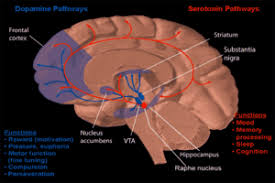Model Organisms in Neuropharmacology 2024
Model organisms have played an indispensable role in advancing our understanding of neurological disorders and developing therapeutic interventions. Traditionally, mammalian models, particularly rodents, have dominated this research space. However, non-mammalian models such as Caenorhabditis elegans (C. elegans), Drosophila melanogaster (D. melanogaster), Lymnaea stagnalis (pond snails), and Danio rerio (zebrafish) are gaining recognition due to simpler anatomy, shorter life cycles, and genetic manipulability. Moreover, their ability to exhibit various forms of learning and memory makes them suitable model organisms for neuropharmacological studies aimed at investigating the effects of different drugs, bioactive compounds, and neurotoxins on cognitive functions.These models provide valuable insights into the molecular and cellular mechanisms underlying neurological functions and disorders, offering complementary perspectives to those obtained from mammalian studies. Despite these advancements, there remains a need for more comprehensive studies that integrate findings from both mammalian and non-mammalian models to fully elucidate the complexities of neurological disorders and their treatment.
This research topic aims to explore the use of model organisms in neuropharmacology, to understand neurodevelopment, neurotoxicity, and the impact of environmental factors on neurological health. Given the increasing prevalence of stress and environmental contaminants, this topic will also investigate how these factors influence vulnerability to drug use and how sex and age can modulate these effects. This research aims to bridge the gap between basic research and clinical applications, ultimately contributing to the development of novel therapeutic strategies for human neurological disorders.
To gather further insights in the comparative analysis of model organisms in neuropharmacology, we welcome articles addressing, but not limited to, the following themes:
- Modeling Neurological Disorders: comparative analysis of disease phenotypes between non-mammalian and mammalian models, to understand the genetic and environmental factors contributing to these disorders.
- Screening and Discovery of neuroprotective and neurotoxic compounds: validation of potential therapeutic agents using non-mammalian/mammalian models; investigating cellular and molecular pathways involved in neuroprotection or neurotoxic effects of various compounds, including drugs, chemicals, and environmental pollutants.- Impact of Stress and Environmental Contaminants, and how these factors affect neurological health and behavior in mammalian/non-mammalian models; exploration of genetic and epigenetic changes induced by environmental stressors and their implications for neuropharmacology.
- Insights on sex and age-dependent modulation of drug responses: influences of these factors on vulnerability to drug use and the efficacy of neuropharmacological interventions in model organisms.
- Translational Research Using Non-Mammalian/Mammalian Models: Application of findings from model organisms to develop novel therapeutic strategies for human neurological disorders; bridging the gap between basic research and clinical applications.



Comments
Post a Comment